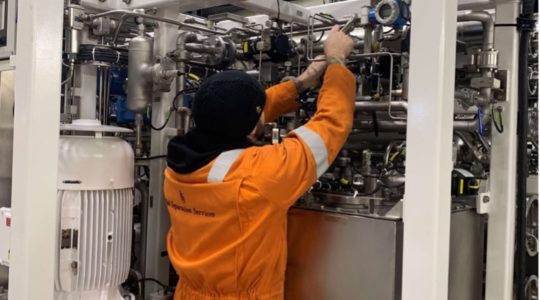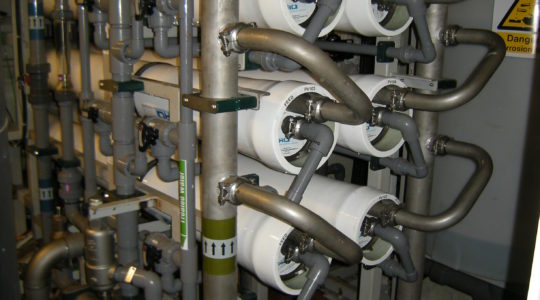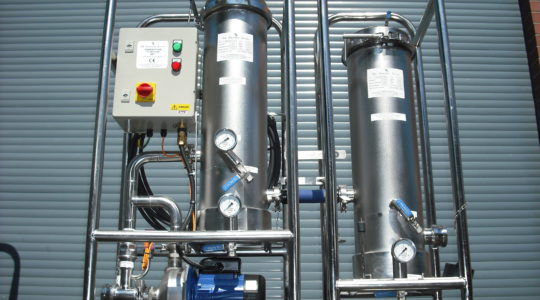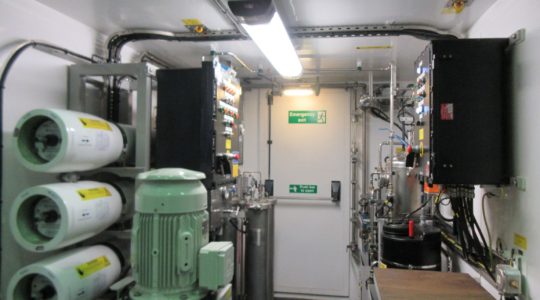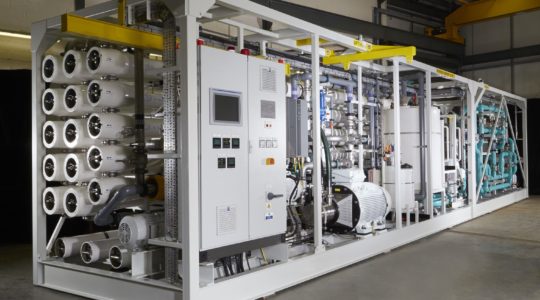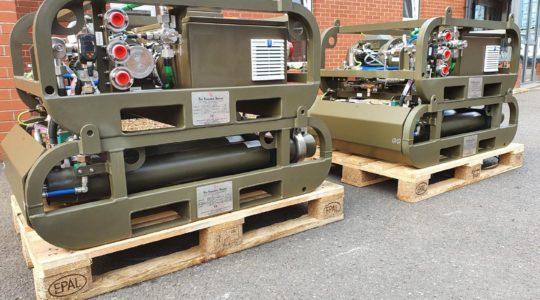Salt Sep were contracted to design, build, install and commission 4 x 75 m³/d & 2 x 3 m³/d per ship for HMS Albion and HMS Bulwark – LPD(R) Class Vessels.
General
An operational requirement of the LDP(R) class ship with regard to their watermarking capabilities, was to have reliably operating RO plants, whilst operating in littoral water, i.e. estuary, enclosed harbours, or within 20 miles of the shore.
RO plants are fitted in both the Forward Engine Room and Aft Engine Room of each ship, these compartments are classified as High Voltage (HV) compartments and therefore leakage or failure of plant components carrying high pressure sea water constitutes a significant safety risk.
A study was conducted to provide an analysis of the requirements for fresh water production, as defined in pertinent standards and from operational defect reports from the existing plant configuration.
A feasibility report was commissioned with the aim of addressing the following operational deficiencies on HMS Albion’s original Reverse Osmosis plant:
- Existing sand filter arrangement is inadequate.
- Sand filter back flushing arrangement not configured correctly and too complicated.
- Inferior materials of construction on cartridge filter.
- High pressure pulsation damper inadequate interiors of design and material.
- HP SW pump discharge pipework inferior construction materials and design.
- Configuration of sea water supply pipework.
- Inadequate design of brine control valves, a frequent cause of plant failure.
The following were also investigated as measures to improve system reliability, performance and ease of maintenance:
- RO plant configuration to be reviewed to improve operational manageability and ease/cost of maintenance and increase of water production.
- Requirement for post treatment of product water.
- Need for flexible routing to prevent mechanical isolation failure.
Project Details

Awarded the contract in September 2006, Salt Sep embarked on a journey of innovation and precision. Overcoming on-board access limitations (the entry hatch for all equipment was only 1.84m x 1.27m), the replacement equipment was supplied in ‘kit form’.
The initial build of the new equipment was carried out at our works in Rochdale, where it was subjected to initial pressure testing before being stripped down and dispatched to the ship. Re-assembly on-board then ensued for a number of weeks, with two RO plants being built back-to-back in each of the two main engine rooms. Once fully assembled, new equipment was subjected to all our usual testing procedures, such as hydrostatic tests on the new pipework and insulation tests of all of the new electrical equipment and wiring.
Our engineers commissioned all 12 RO plants on both ships whilst at sea, with all plants attaining their designed water quality.
The plants have been designed to require the minimum of operator intervention, as they are highly automated.

Process Flow


